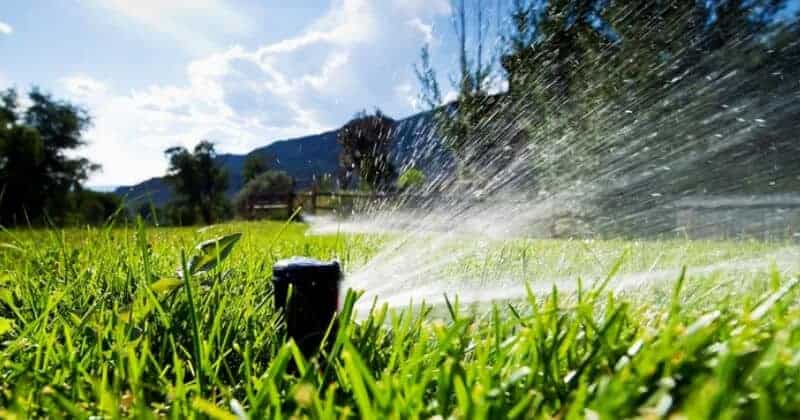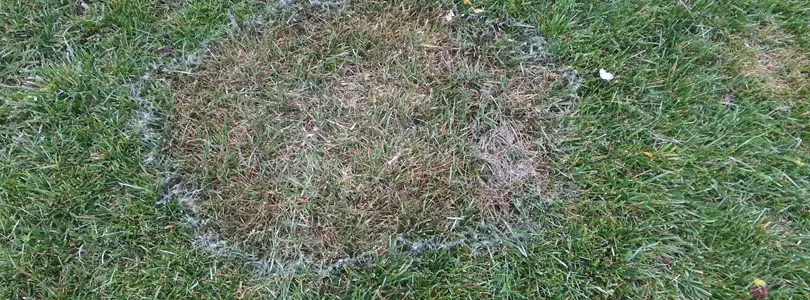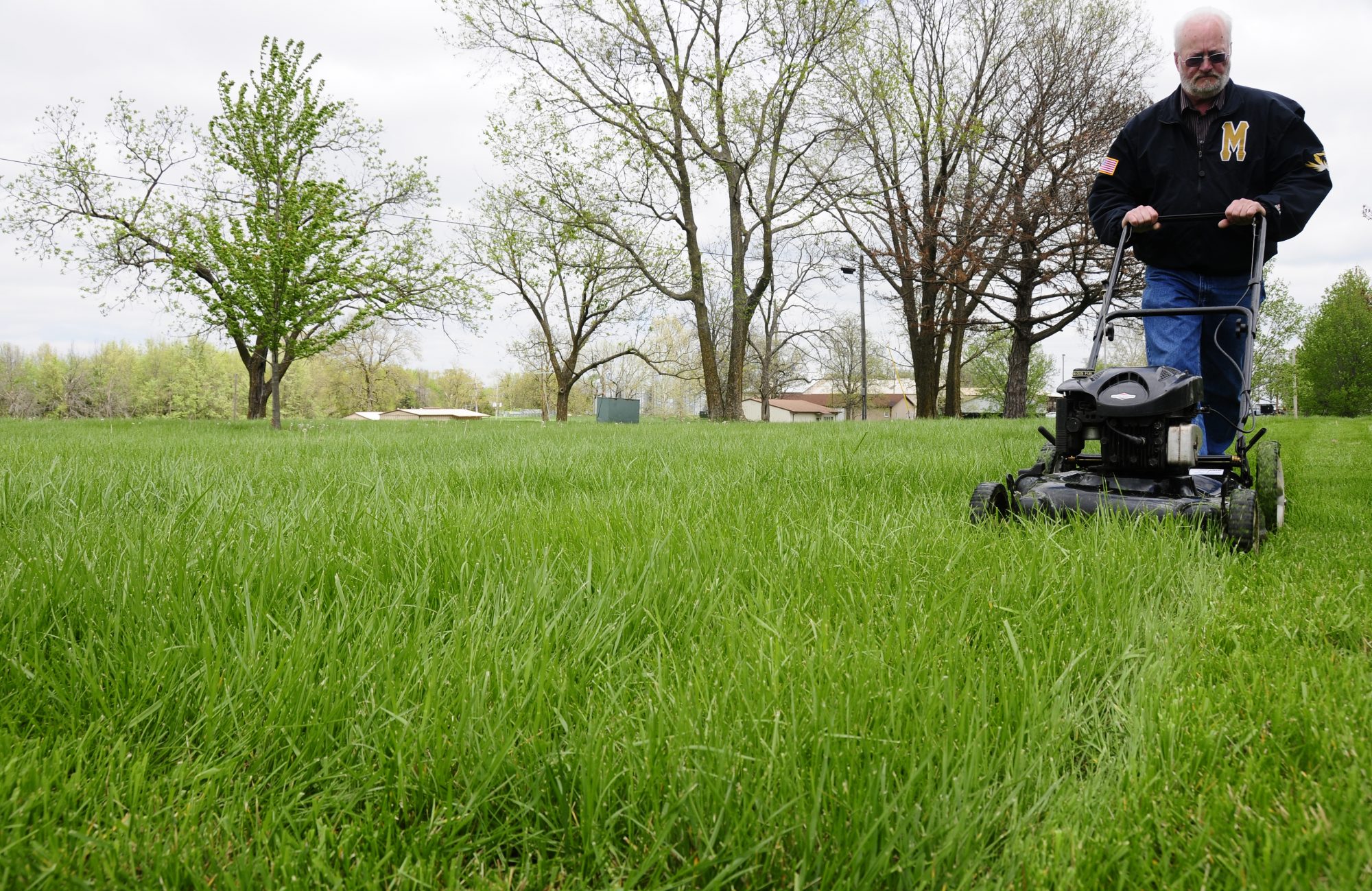Tips For Watering Your Lawn
Water is best applied according to your soil type, weather and plant type.
Plants prefer rain water over water from the hose. Set up your rain barrel to collect rain water to use on your yard. Learn more at YardSmart – Rain Barrels.
Always water low and slow and never apply water faster than your soil can absorb.
Water before 10 a.m. or after 4 p.m. to reduce evaporation.
Overwatering can lead to plant death. Soils in Calgary are generally clay-based, and retain more moisture. Always check your soil moisture before watering.
Sun, shade and wind affect how much water evaporates from the soil. Adding mulch to cover soil around plants, shrubs and trees helps retain soil moisture.
For more information on irrigation, please visit Irrigation Setup and Maintenance Tips.
Track your water use
Knowing how much water you currently use outdoors can help you track water savings in the future.
Compare your average monthly water use over the winter months, to the months you are using water outdoors in the summer.
The difference between summer and winter consumption is the volume of water that you are using outdoors.
To compare to the previous year, look at past bills, or at the historical water use graph at the top of your water bill to get a year over year comparison.
Watering Different Types Of Grass
The duration of watering and its frequency greatly depend on the type of lawn you are maintaining. Proper lawn care varies with the type of grass, but it also depends on several factors such as the season and the area in which you live.
Different types of lawns have different watering and maintenance needs. It is therefore important to pay attention to your type of lawn and its needs. Once you know how much and how to water your specific type of lawn, it will be easy for you to set up a watering schedule to get the best results year round.
Ten Quick Facts For Watering Your Minnesota Lawn
Read Also: Creeping Charlie Killer Borax Recipe
How Long Should You Water Your Lawn
Nothing decorates your homes exterior quite like a thriving lawn. So knowing what things to do to get your lawn to flourish year round is key. Weve compiled a list of some of the questions about lawn watering. With the right lawn watering tips and techniques, you can be on your way to an even healthier lawn.
Watering And Plant Needs

Some plants need regular watering, others less. How you water new plants affects the root development, which affects how much water they will consume in the future.
Always read the plant tag to know what each plant specifically needs depending on their location requirement, and put the right plant in the right place .
Avoid planting in hot, dry weather as this easily stresses plants and can place highly demands on watering needs.
Select plants appropriate for your growing zone native and drought-tolerant plant species will require less water. See our list of recommended annuals and perennials, and trees and shrubs.
Recommended Reading: Carrollton Water Restrictions
How Much To Water Your Lawn
Watering the proper amount is criticaloverdo it, and your grass, your water bill, and the environment will suffer. The amount of water you need is generally 1 to 1.5 inches per week, but it can vary depending on your grass type, the climate you live in, your soil type, and the age of your lawn.
Established Lawns
In general, you want the top 6-8 inches of soil to be moist, but not soggywhich translates to 1 to 1.5 inches per week. Watering deeply, but infrequently, leads to stronger root development and drought-resistance than watering briefly every day. You can break up these waterings into twice a week during most of the year, or three times a week during the hot summer months.
Newly Seeded or Sodded Lawns
To encourage proper growth, newly seeded or sodded lawns need moisture in the top inch of their soil, but not so much that they turn soggy. Instead of watering a few times a week, you will need to take a mister and gently spray the newly seeded areas once to two times a day, depending on the weather.
As the seeds germinate, keep the top 2 inches of soil moist. Once the grass grows to a 3-inch mowing height, you can reduce watering to twice a week. Then, you should soak the soil down 6-8 inches, like you would an established lawn.
Water Deeply But Not Too Often
- Too much watering can lead to poor growing conditions and disease problems.
- Water only when your lawn needs it, usually no more than once a week when there is no rainfall.
- Apply at least 2.5 cm of water. Put a tuna or pet food can on your lawn to measure how much you’ve watered. Stop watering when it’s full.
- Consider the soil type and surface features. Grass growing on compacted, fine soil or on slopes needs lighter, more frequent watering.
Also Check: Murray Lawn Mower Parts List
What Happens If My Lawn Gets Too Much Water
Too much water can damage your lawn, or even your homes foundation. Grass cannot grow properly in areas with standing water or spongy soil, which allows moss to develop. You may choose to re-grade your yard, amend heavy clay soil with organic matter to improve drainage, or install a rain garden or mulch bed in low spots that frequently fill with standing water.
Under Regular Summer Weather Conditions Continue To Water Your Lawn 1
However, under heat waves and weeks of consistent, hot temperatures increase the monitoring of your lawn to watch out for signs of drought. If you notice any of the following signs, increase the frequency of your watering:
-
Dormant, dull and frail looking brown or green grass
-
Grass fails to bounce back after being stepped on
-
Grass feels significantly warmer in the evening
To note: that it is normal for growth of turf grass to slow down during the hot summer months. In fact, your grass may appear slightly yellow or brown despite an adequate water supply.
Once cooler temperatures emerge and the heat breaks, your lawn should bounce back to pre-heat wave greenness.
Always make sure to respect local water bans. Turf grass will be able to survive periodic droughts with little to no water.
Read Also: Aerator Rental Lowes
How To Tell When Its Time To Water Your Lawn
A lawn that has dried out and needs watering will often fall dormant and turn a duller shade of green or even brown. Before reaching the dormancy stage, some types of grass will even begin to wilt or bow when they are in need of watering.
A screwdriver or a hand spade are also good tools for assessing the moisture in your lawn.
If it is difficult to get your tool into the ground, then it is very likely too dry. Do this test intermittently while watering to ensure that it has reached deep into the soil. Its best to saturate the soil with moisture to a depth of 6 to 8 inches when watering.
How To Care For Spring Lawns
With a few spring lawn care tips, you can have the yard youve always dreamed of.
Watering Dont be tempted to water your lawn in early spring. Wait until the grass shows signs of wilt, which may not happen until late spring or early summer or maybe even later. Watering too early only encourages shallow root growth, which will be unable to withstand hot, dry summer weather and may result in a brown, dry lawn by picnic season. When you start watering, water deeply then let the grass wilt slightly before watering again. Typically, about an inch of water per week is enough.
Fertilizing Similarly, spring isnt a good time for fertilizing the lawn because the tender, new growth is likely to be scorched when the weather turns hot in summer. This is especially important if you live in a climate affected by drought. If your lawn isnt healthy, you can apply a light application of a balanced slow-released lawn fertilizer, but withhold heavier fertilization until autumn. The exception is if your lawn consists of St. Augustine or another warm season grass. If this is the case, fertilize as soon as the grass greens up and shows active growth in mid to late spring.
Aerating If your lawn needs aeration, which involves poking small holes in the lawn so water, nutrients, and air can reach the roots, midspring is a good time. However, wait until fall to remove thatch.
You May Like: Smallest Riding Lawn Mower Available
Can You Over Water Grass
Yes, your grass can get too much water. If your grass gets too much water, it doesnt get oxygen and can actually suffocate. Too much water also makes your grass more susceptible to disease. Watering Guidelines for New Lawns: New lawns need to be watered every day and sometimes more than once a day to keep soil moist.
How Can You Tell If Youve Watered Your Lawn Enough

The average lawn needs at least 1 inch of water to 1.5 inches of water per week. This should be continued throughout the year. Even lawns in winter need water as you cant always guarantee that the rainy weather will give them enough.
To be able to figure out if it has enough water, you should get a rain gauge. This will show you just how much water the grass is getting. If using a sprinkler system, make sure that the water from the sprinkler is going into the rain gauge. This will allow you to measure the amount of water that the grass is getting.
The best thing for your lawn would be to water it twice per week, but water it lots, making sure it has 1 inch of water. By watering it a little every day, the grass roots will be shallow, making it difficult for the root system to support the grass. It can also lead to fungus growth in the lawn.
Read Also: Does Ace Hardware Sharpen Mower Blades
How Long To Water Your Lawn
It is ideal to water lawns about one inch of water per week. To determine how long you need to water to get one inch, place a plastic container in your yard and set a timer. On average, it will take 30 minutes to get a half inch of water. So, 20 minutes, three times per week will give a lawn about an inch of water.
This formula works best with healthy, well-cultivated soil. Healthy soil provides excellent drainage while also providing just the right amount of water retention at the root zone, where grass needs it most. Poor soil with inadequate drainage will cause soil to become waterlogged, while soil devoid of organic matter will cause water to drain, leaving soil unnecessarily dry.
The Best Time Of Day To Water Your Lawn
The best time to water your lawn is early in the morning since it is cooler and the winds tend to be calmer, so the water can be absorbed by the roots before it evaporates. If for some reason you cannot water in the morning, it is best to water between 4 p.m. and 6 p.m. rather than during the day or early afternoon. During the day more than 50% of the water evaporates before entering the ground. Make sure the blades of grass dry before dark to reduce the risk of fungal disease. Watering in the evening is not recommended!
Also Check: Does Lowes Sharpen Lawn Mower Blades
How Much You Should Be Watering Your Lawn In Spring And Summer
Keeping your lawn looking good and healthy requires a certain amount of care, with watering it, being at the top of the list. All lawns need a certain amount of water, and knowing if yours is getting enough just takes getting familiar with your lawn, and as well as learning some tips on how and when to water it. Different types of grass have different requirements, so learning about your grass type is a good place to start. And take into account that the climate you live in will also play a role in your water routine. The rule of thumb, however, according to Freshome , is most lawns require 1 inch to 1 1/2 inches of water per week, unless your lawn professional tells you differently. Although this is a general rule for most lawns, there are some variations when it comes to warmer months and when grass should really green-up. How much should you be watering your lawn during the spring and summer? The answer is, that there are variables and lets take a look what they are.
How Long To Water New Grass Seed
How long to water new grass seed depends on your soil conditions and your sprinkler setup. In general, ten minutes of watering per session will provide enough water to keep the top couple inches of soil moist.
As your new grass seed grows and flourishes, you can water deeper and less frequently this will encourage established grass roots to extend deeply into the soil. When watering grass seedlings, gradually increase your morning watering sessions over time, while decreasing your evening watering. Eventually, youll want to water between 6 and 10 am, while the weather is still cool. An established lawn typically requires about 1 inch of water per week, including rainfall.
Use the chart below to help you plan out your ideal watering schedule:
Don’t Miss: How To Clean Mold Off Plastic Outdoor Furniture
Figure The Output Of Your Sprinklers
Once you know how much watering your grass needs, determining just how much water comes out of your sprinkler system is the next thing you need to figure out to know how long you should keep your sprinklers on. To do this, put four or five containers in an area covered by the sprinklers and turn it on for 20 minutes. Then measure the water in each container in inches using a ruler and determine the average. Then multiply the depth of water by 3 .
How Much Water Should I Use
How much water to use depends on the type of grass in your lawn and the area in which it lives. Cool season grasses, such as bluegrass and ryegrass, have higher water requirements than warm season grasses like Bermuda grass or centipede grass. A basic rule of thumb is to supply one inch of water to your lawn per week, depending upon the weather. This is the same for cool season or warm season grasses. During the middle of a hot, dry summer, a lawn with cool season grasses may need more water whereas a warm season grass lawn can do just fine with less water.
You can train your lawn to be water efficient with careful lawn care . This is accomplished by watering deeply, but infrequently. If you water a little bit each day, your lawn will develop shallow roots as they have no need to grow deeper in search of more water. Let your lawn dry out some before watering again. The roots will grow down deeper in the soil looking for water.
Also Check: Bountiful Earth Humate
Best Time To Water New Grass Seed
The best time to water grass seed is in the morning and evening. These are the coolest parts of the day, which allows water to absorb into the ground instead of evaporating. A water timer can simplify the process of when to water grass seeds, so you can easily and efficiently water your newly seeded lawn with no hassle at all.
How to water new grass seed depends on the area youve seeded. Large areas can benefit from the use of a quality rectangular sprinkler. Use a small spot sprinkler for smaller seeded areas.
How Do You Know If Your Lawns Grass Is Too Short

Overmowing your lawn is a thing to look out for. If your lawn is starting to look yellow and dried out, you are probably mowing your lawn too short .
One great rule to follow when determining how long you should keep your lawn and how often to mow your lawn is the one-third rule:
Experts recommend that you cut one-third of the length of your lawn each time you mow it.
This rule of thumb will actually differ depending on the time of year, and thats why weve decided to dig in with this article and provide information to those wondering how often to mow lawn areas in spring, summer, or fall.
So, lets find out how often you should mow your lawn in every season.
Don’t Miss: Scotts Disease Ex Vs Bayer
To Keep Your Lawns Thirst Quenched Water Once A Week
If it is extremely hot you will need to water more! The best time to water your lawn is early in the morning, when the sun is starting to rise. Youll lose more water to evaporation if you water in the afternoon while the sun is shining. Youll leave the grass too wet, promoting fungus growth, if you water in the evening.
